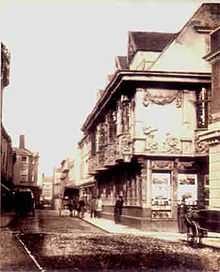Frederick Scott Archer


Frederick Scott Archer (1813–1 May 1857) invented the photographic collodion process[1] which preceded the modern gelatin emulsion. He was born in either Bishop's Stortford or more likely Hertford in the United Kingdom and is remembered mainly for this single achievement which greatly increased the accessibility of photography for the general public.
Life
Scott Archer was the son of a butcher from Hertford who went to London to take an apprenticeship as a silversmith. Later, he became a sculptor and found calotype photography useful as a way of capturing images of his sculptures. Dissatisfied with the poor definition and contrast of the calotype and the long exposures needed, Scott Archer invented the new process in 1848 and published it in The Chemist in March 1851, enabling photographers to combine the fine detail of the daguerreotype with the ability to print multiple paper copies like the calotype.[2] In publishing his discovery, he did so knowingly without first patenting it,[2] giving it as a gift to the world.[3]
He later developed the ambrotype jointly with Peter Wickens Fry.
He died impoverished, as since he did not patent the collodion process he made very little money from it.[2] An obituary described him as "a very inconspicuous gentleman, in poor health."
His family received a gift of £747 after his death, raised by public subscription, and a small pension was also provided to support his three children after the death of their mother.[2]
The Royal Photographic Society has a small collection of Scott Archer's photographs, some are also held in the Victoria and Albert Museum.
Archer is buried at Kensal Green Cemetery in London, W10.
See also
References
- ↑ Phil Coomes (27 April 2010). "Remembering Frederick Scott Archer". BBC. Retrieved 2010-12-06.
- ↑ 2.0 2.1 2.2 2.3 "Frederick Scott Archer". British Journal of Photography 22 (773): 102–104. 26 February 1875. Retrieved 09-06-2011.
- ↑ Peres, Michael R., ed. (2007). Focal Encyclopedia of Photography: Digital Imaging, Theory and Applications. Focal Press. p. 124. ISBN 978-0-240-80740-9.
External links
|